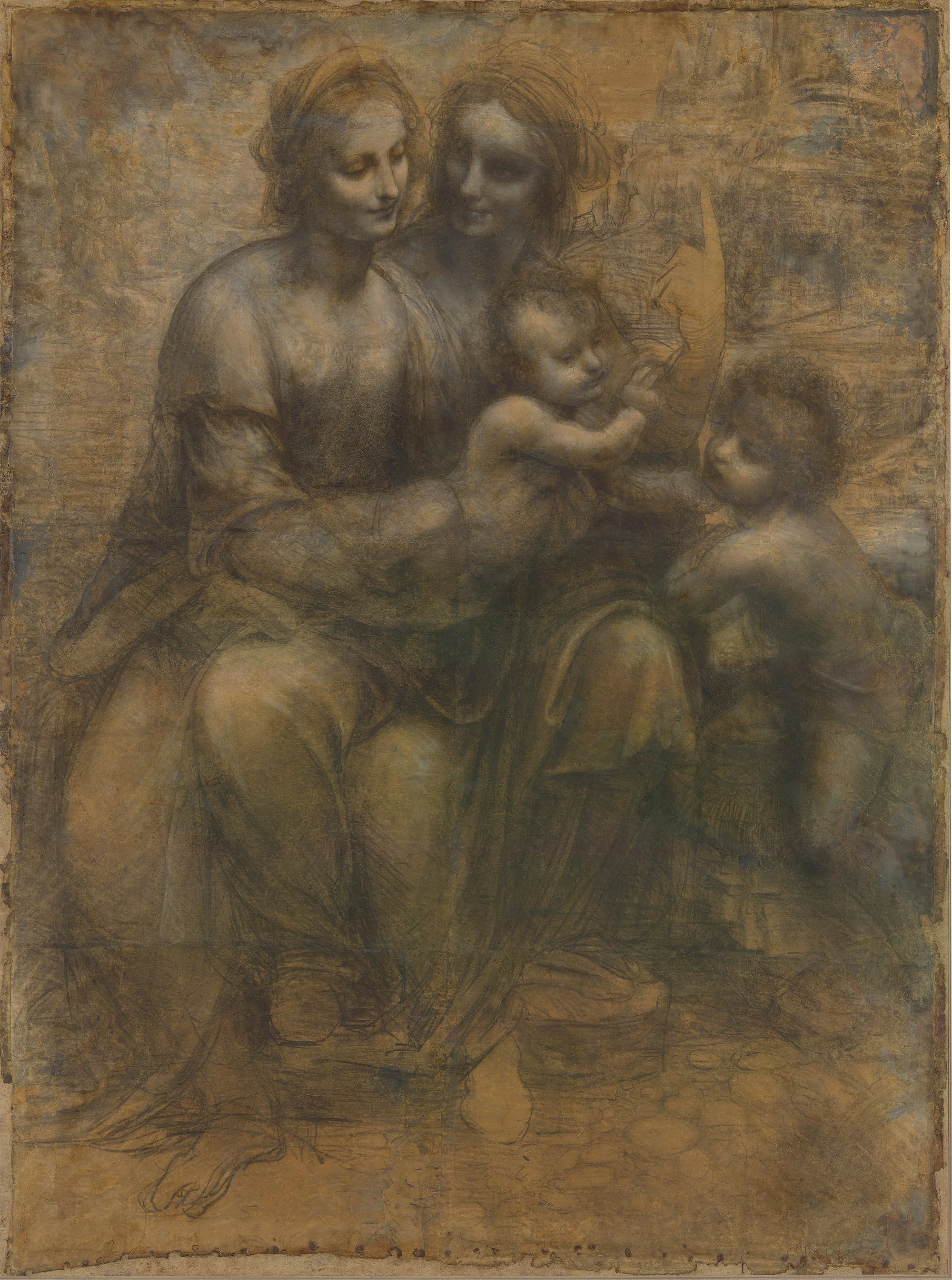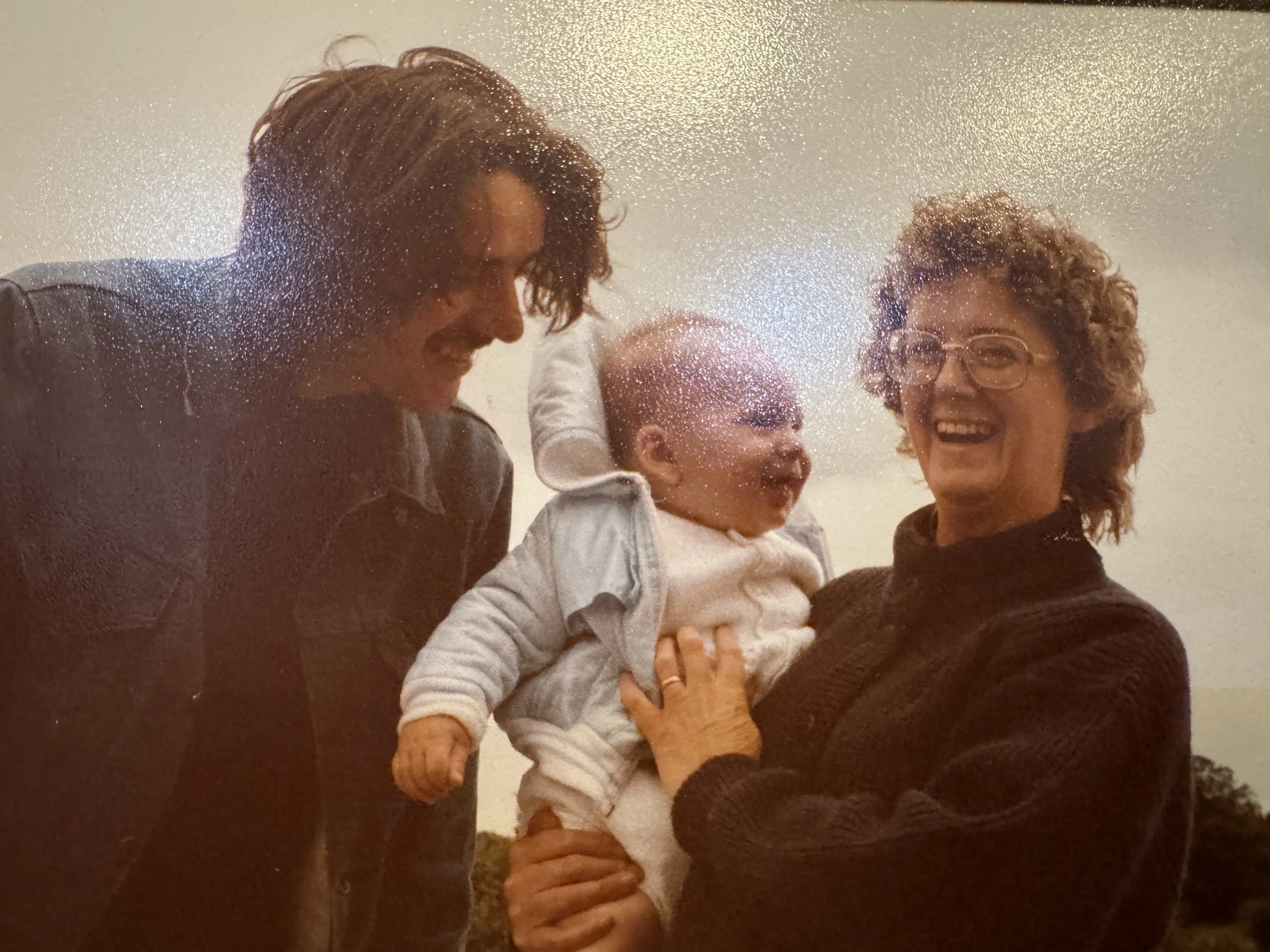Sunday Summary: LGBTQ+ in Art & Music
As this week saw the end of Pride Month, I reflect on the LGBTQ+ individuals that have helped shape art and music in the western world, all at a time when, to be who they are, would have been dangerous, and consider whether things have changed.
A building at University Hospital Coventry and Warwickshire, 2025.
Round up of the Week
This week, as I continued to recover from surgery, my dear Grandma, had to have emergency care herself. Like the weather today, it can’t help feel that the universe is creating a deluge of things going on at the moment. Thankfully, Grandma is on the mend; she is such an extraordinary person, a fighter, lover of life and never stops ceases to laugh. I really am so proud to be her grandson and blessed that she has had so much input into my upbringing.
While visiting her today, I was stuck by a building that I could view from the car park. Shown above, it was of the LGBTQ+ flag on the side of the building. Recognising that this week saw the end of Pride Month, I thought I would theme this week’s blog on how LGBTQ+ people in Art and Music have influenced me. I also consider whether in a world, ,where tolerance appears to be challenged, does Pride still matter?
LGBTQ+ Artists
If you had to name some famous LGBTQ+ artists, I, like probably many of you, would probably name contemporary names such as Hockney, Kahlo, or Warhol. We may even think of the infamous Renassicance painter, Michelangelo. All have shaped and transformed art in their own way.
Personally, Michalangelo definitely left an impression on me. Visting the Vatican as a young boy, I can still recall vividly the impact on me seeing his creations in the Sistine Chapel, or the profound sculpture of the Pieta, which remains my favourite piece of sculpture of all time. The pain and humanity, captured of a mother, holding her dead son, is something that sadly many of us have seen, if not in our personal lives, on the news.
La Pieta, Michalangelo, Vatican. Courtesy of Wikipedia.
While we may be aware of people like Hockney, Warhol, and Michelangelo, there are many other lesser known individuals who were LGBTQ+ that have also shaped our artistic tradition in the west.
One person that probably influenced the use of light profoundly, and something that I myself also inculde in both my paintings and compositions, is Caravaggio. The first time I saw a Caravaggio was relatively recently. Seven years ago, I took myself off to Paris for a week and I spent one whole day in the Louvre. Carvaggio heavily influenced the Baroque movement, a movement that left its mark in art, music and architecture. Theatrical in nature, even more so by focusing on how light also can add drama to the moment, portrays the emotional angst of being human.
Caravaggio is famous for painting lots of beheading scenes; John the Baptist, David and Goliath, and others, but it’s the death of the virgin that caught my eye in the Louvre. Like Michalangelo’s work, it was the portrayal of emotion that got me. We’ve all lost loved ones and Caravaggio presents the rawness in the painting. While, I don’t tend to focus on people much in paintings, I would say there are elements of the essence of Caravaggio in my music.
The death of the Virgin, The Louvre, Paris.
The last artist, I am going to focus on may surprise you. There is some academic discussion as to whether he was LGBTQ+. This artist, never married and never had a known partner. While maybe now some may say he was asexual, one contemporary source at the time highlights that this person was almost proscuted for a homosexual act, and was only let off by a technicality. Scholars believe this epsidode in his life scared him and never took a partner again. This painter, scholar, academic, is most famous for one picture. It is Da Vinci.
While I shall leave you to debate whether you agree with some scholars, or not, my love of Da Vinci is long, and it is not because of the Mona Lisa. Although this feels like it is as much about religious art as anything else, this is not intentional. The reality is, the Church was a significant patron of the arts and while the paintings are often religious, it’s the realism that they convey that resonates. This is particularly true of my one of my favourite pieces by Da Vinci. It is his unfinished painting of St Anne, the Virgin and a baby Jesus. Da Vinci is trying to capture the joy that many feel, the moment they get to hold their grandchild.
St Anne, The Virgin, Christ and St John the Baptist, Da Vinci, National Gallery, London.
Nan, Dad and I. 1985
Why did people like Da Vinci Matter?
In the short period before people like Da Vinci were painting in renaissance Italy, artists still painted in very limited poses; stiff, unrealistic, and with limited perspective. Da Vinci, Michalangelo, Carvaggio, their contemporaries, and those like myself who followthem, try to purse truth and convey it as realistically as we can as we try to capture our human experiences. It is difficult to say what would have happened without their contributions, but what we do know is that their contributions have been seismic, and because of who they loved, could have very easily not have happened. When I think of that, I can’t help feel about what we would have lost. Dan Brown for one would have had to find something else to write about although the queues at the Louvre would probably be more manageable.
LGBTQ+ Composers
I think if I asked many of you which LGBTQ+ composers have influenced western music, I think you would find it difficult to name some, if at all. Many academics, widely accept that Tchaikovsky was homosexual, and is probably the name that you may have thought of. However, did you also know that academics also largely agree that composers like Barber, Handel, Wagner and even Chopin were LGBTQ+? How ballet, Coronations, and music for films, would be so much poorer had people not turned a blind eye to their private lives. All of them could have easily been imprisoned or even sentenced to death for who they are and loved.
My song of the week is picked from a more contemporary LGBTQ+ composer. Bernstein, renown for his private life, also brought so much to western music and films scores. My song of the week is taken from one of his most famous musicals and film score and is a personal favourite of mine, having enjoyed it since I was a young child watching it with my grandparents. Very happy memories.
Does Pride Matter?
Everyone will have their views on this, and sadly seems to be a debate that after years of progressive steps for equality, is now becoming tangled up in political debates associated with anti-establishment and populism. Whatever your political persuasion, I think recognising Pride, says that we accept that the persecution and injustices of the past were not right, that we are all human, and the diversity of humanity is accepted. To say otherwise risks the marginalisation, and censorship of we, the people, that love, feel, that contribute to our society, and culture, in a rich and colourful way, as evidenced by the people I have written about today.
Although Pride month has ended, many Pride events are still to take place over the summer. I hope that next time you see the flag, or a march, please stop and think about what we would have lost if persecution had got Da Vinci, Michalangelo, Bernstein, Chopin, or even Tchaikovsky and allow space for tolerance for a new generation of LGBTQ+ people to grow up feeling safe in their community and can contribute to our society and cultural history like everyone else, and those that have gone before us.





